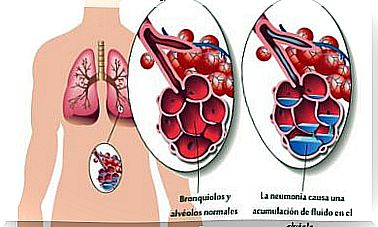Ketamine Poisoning
Ketamine is a fast-acting anesthetic. Its use is allowed in humans and animals as a sedative for minor surgery.
It is a translucent liquid derived from phencyclidine. However, unlike its predecessor, it does not produce permanent neurological or physiological effects.
It is used in surgical procedures that require analgesia of the skin such as burns, emergencies or in pediatrics. In the case of veterinary medicine, it is used as a tranquilizer for surgeries.
In addition, it has been a drug of abuse in the US since the 80s and in Europe since the 90s. It was Calvin Stevens who synthesized it in 1962. However, it was not until 1965 when it was used for the first time in the clinical practice by Corsen and Domino.
Ketamine is sold in injectable solutions and clandestinely in powder form. In high doses it causes intoxication and hallucinations similar to those of LSD.
Ketamine toxicity mechanism
The mechanisms of action of ketamine at the molecular level are not known. However, its analgesic activity in the CNS can be measured by different mechanisms including:
- Blockade of NMDA receptors.
- Reduced presynaptic release of glutamate.
- Interaction with opiate receptors, although to a lesser extent.
Therefore, pharmacologically speaking, it is classified as an NMDA receptor antagonist. At high anesthetic doses, it also binds to the type 2 μ-opioid receptor in human neuroblast cell cultures, but without agonist activity. Furthermore, it is capable of interacting with sigma opioid receptors in rats as well.
On the other hand, it interacts with muscarinic receptors, with descending monoaminergic analgesic cascades and with voltage-gated calcium channels.
Toxicokinetics

Ketamine is administered intravenously and intramuscularly. However, the drug can also be absorbed through the nasal, rectal, and oral routes.
Once absorbed, it is rapidly distributed in low concentrations in the heart and skeletal muscle. On the other hand, it is distributed in high concentrations in adipose tissue, liver, lungs and brain.
It has a half-life of 10-15 minutes. This means that it takes this time for half of the maximum concentration in the blood to be eliminated. This is the time that corresponds to the duration of surgical anesthesia.
Regarding its metabolism, ketamine is metabolized in the liver by reactions of :
- N-demethylation
- Hydroxylation of the cyclohexane ring
- Glucuronide conjugation
- Dehydration
When the corresponding biotransformations are finished, the metabolites and the rest of the drug that has not been modified are eliminated by more than 90% in the urine.
Ketamine toxicity
The toxic effects of this dissociative drug depend on the dose consumed. Low doses produce only hallucinations. However, at somewhat higher doses it acts as an analgesic inducer and at high doses it produces general analgesia.
On the other hand, at higher doses, ketamine causes rapid eye movements, slow breathing, loss of balance, and dizziness.
Likewise, the continued use of ketamine causes problems with memory, concentration and deterioration of other abilities.
Thus, an overdose of this drug causes the following symptoms to appear. These are proportional to the increase in dose:
- Delusional behavior This presents with delusions and hallucinations up to 2 h after administration.
- Respiratory arrest and cardiac arrest.
- Seizures
- Arrhythmias
How is ketamine poisoning treated?
There is no specific treatment for ketamine poisoning. We can divide the treatment into two parts: general measures and symptomatic treatment of complications.
As for general measures, when a person is under ketamine intoxication, airway resuscitation measures are carried out. Blood pressure and heart rate should also be monitored.
In certain situations, oxygen saturation monitoring and cannulation of a peripheral venous line are also required.
Symptomatic treatment of complications

There are a number of complications that can appear in ketamine poisoning. The first of these are laryngospasm and respiratory depression.
To treat them , non-invasive ventilatory support such as reservoir masks is usually used. On the other hand, orotracheal intubation is not usually necessary.
Excessive salivation may also appear. Extreme hypersalivation is a common complication. The intoxicated person should be placed in a suitable position to avoid inhaling saliva and choking.
In the case in which there is respiratory compromise due to abundant secretions, atropine can be administered to improve the situation.
On the other hand, cardiovascular disorders are rare but important complications in ketamine poisoning. In the case of bradycardia, atropine is also administered.
In some cases, hypotension also appears, which is corrected by the administration of boluses of intravenous colloids.
Finally, psychomotor agitation and hallucinations may appear. In this situation , stimuli such as light and noise should be minimized.
Physical restraints can also be used. However, these should be used after the corresponding sedation with benzodiazepines has been administered.









